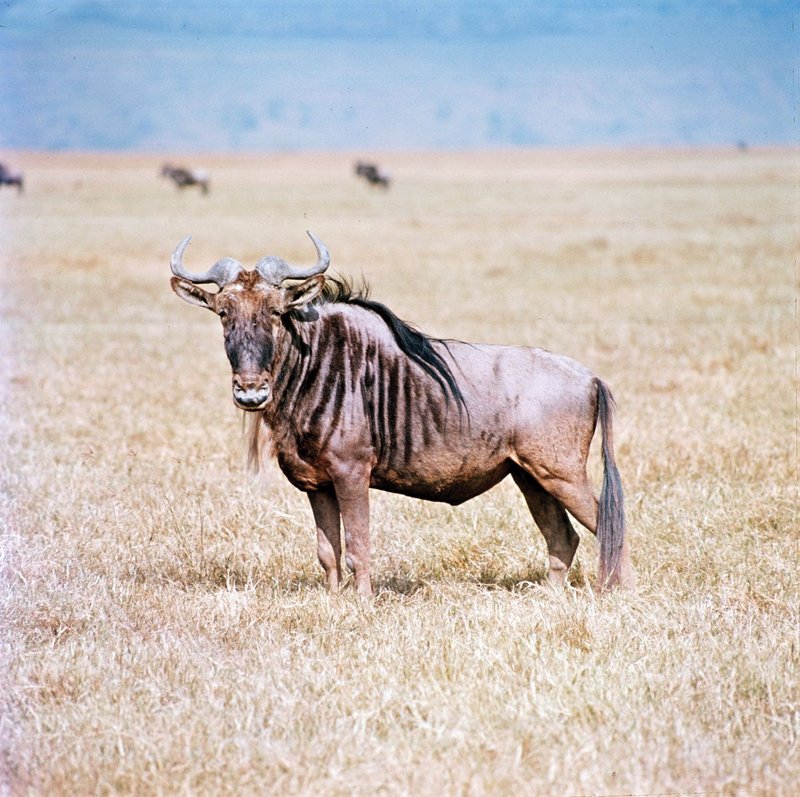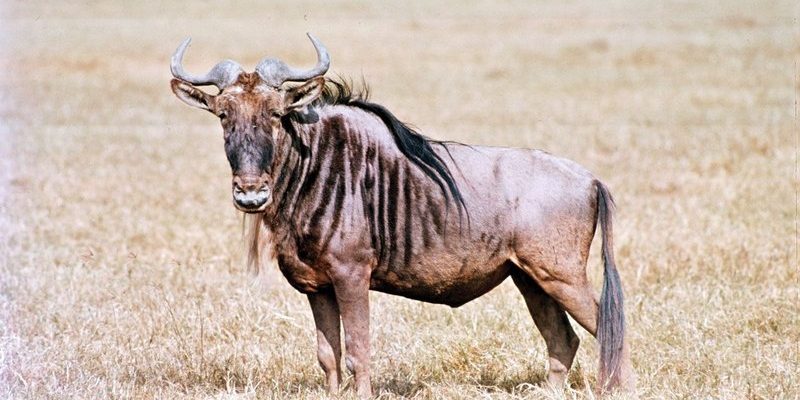
If you’re curious about these fascinating animals and how they relate to the gnu, you’re in the right spot. Imagine sitting down over coffee, chatting about wildlife and all the quirky similarities and differences that make each species unique. Let’s take a look at the ten animals that resemble the gnu and dive into what sets them apart.
1. Bison
You might think of bison when you picture the gnu, especially with their stocky build and large horns. Bison are the majestic giants of North America, often roaming the open plains. They have long, shaggy fur that gives them a rugged look, much like the gnu’s mane.
What sets them apart? The bison has a massive hump on its back, a characteristic that isn’t found on gnu. Their body shape is also bulkier, and they tend to have a more rounded face. If you ever see one up close, you’ll notice they have a cooler, more stoic demeanor compared to the gnu’s more frantic movements. The gnu often appears to be racing from one spot to another, while bison tend to lumber slowly, savoring their environment.
2. Cape Buffalo
Cape buffaloes are another creature that shares similarities with the gnu. These hefty mammals boast thick, curved horns that can be quite intimidating. Much like the gnu, they are social animals often seen in herds, providing that sense of community that many wildlife enthusiasts admire.
How can you tell them apart? While gnu can have a more slender build, Cape buffalo have a stockier, more formidable appearance. Their horns are also more pronounced and grow outward, forming a “boss” on top. When you catch them in action, the buffalo might be grazing peacefully, giving off a different vibe than the gnu’s high-energy antics.
3. Eland
If you’re looking for an animal that resembles the gnu but with a bit more grace, the eland fits the bill. These are the largest antelopes in Africa. They have long legs and can leap impressively high, which is quite a sight! Their fur is often a sandy color, similar to a gnu, which helps them blend into the dry grasslands.
What makes elands distinctive? Elands have a more elegant frame than the gnu, plus they have spiraled horns. Their markings are also different; look for the vertical stripes running down their sides, which are absent in gnu. You might see them grazing peacefully in the same regions as gnu, but their serene demeanor sets them apart.
4. Hartebeest
Next up, the hartebeest is another antelope that you might mix up with the gnu, especially from a distance. With their long legs and unique head shape, these animals certainly catch the eye in the savannah landscape.
So, how do you differentiate them? Hartebeests have a distinctive elongated face that gives them a more horse-like appearance. Their bodies are slender and they can be more agile than gnu. While gnu often have a darker coloration and a more rugged look, hartebeests sport a lighter, reddish-brown hue. When you see them, you’ll notice how they tend to stand alert, often scanning their surroundings.
5. Waterbuck
Waterbucks are another similar species, often found near rivers and lakes in Africa. They have a robust build, thick fur, and a similar body shape to a gnu, which can make identification tricky.
What sets waterbucks apart? The most notable feature is their distinct white circle on the rear, a marking you won’t find on gnu. Their fur is also coarser and can appear darker or have a slightly shaggy texture. When spotted in their natural habitat, waterbucks usually enjoy being near water, unlike gnu, which are more of a plains-dwelling creature.
6. Gazelle
While gazelles are much smaller than gnu, they live in similar habitats and can sometimes be mistaken for young gnu from a distance. Gazelles are known for their speed and agility, often seen darting across the plains.
What makes them different? Size is the most glaring difference—they’re much smaller and more delicate. Gazelles have graceful, elegant horns and a sleek body, while gnu are bulkier. Moreover, gazelles usually have a lighter color and a more refined face, which makes them stand out from their heftier counterparts.
7. Kudu
The kudu is another antelope that people often associate with the gnu. They have impressive spiraling horns and a graceful build. Kudus can often be seen browsing at the forest edge or open savannah.
How can you tell a kudu from a gnu? Kudus have a more refined appearance, with long legs and a slender body. They tend to have striking white markings on their faces and bodies, which gnu lack. While the gnu has more of a shaggy coat, kudus’ fur is smoother and more elegant.
8. Sable Antelope
Sable antelope are striking creatures with long, curved horns and a sleek, muscular body. They can often be found in the same regions as gnu, which makes them easy to confuse at a glance.
What distinguishes them? The sable has a much darker coloration, with a glossy coat compared to the gnu’s rougher appearance. Their horns are also impressive and grow upward, giving them an intimidating and dominant look. You might notice that, unlike gnu, sable antelope are more solitary, often seen alone or in small groups.
9. Impala
Impala are perhaps one of the most graceful of the antelopes. They are lighter and faster than gnu and can leap incredible distances, making them a joy to watch in the wild.
What’s the difference? Size is the most obvious distinction. Impalas are smaller and more agile than gnu. They have a unique color pattern, with a brownish coat and white underparts. Additionally, they also sport long, slender horns that curve backward, unlike the powerful, beefy horns of the gnu.
10. Topi
Last but not least, the topi is another antelope that shares the African plains with the gnu. They have a unique, robust body and often graze in similar areas.
How can you differentiate topis from gnu? Topis have a more elongated shape with a distinctive chestnut color. Their horns are long and backward-curving. While gnu may seem more rugged and wild, topis are often more graceful with a more refined face.
In conclusion, it’s fascinating to observe how the gnu is just one of many animals that roam the African plains, sharing similarities and traits with others. Each of these animals brings its own unique characteristics to the diverse tapestry of wildlife. Next time you’re out exploring nature, you might just see one of these creatures and remember how they relate to the iconic gnu in some way. Nature has quite the lineup of characters, doesn’t it?

